Car photography is an art that requires a skilled eye and the right equipment. As a photographer, it’s crucial to have the right camera to capture stunning car shots. A camera that’s capable of producing high-quality images and offers the right features is essential to achieve excellent results.
In this blog post, we will discuss the importance of having the right camera for capturing stunning car shots. Recommend the best eight cameras for car photography.
Finally, we will provide some tips for getting the Best Car Shots with Your Camera
Let us start!
I- The right camera for capturing stunning car shots.
Generally, your chosen camera for car photography should have the following features:
- Image Quality
The image quality of a camera is the most important factor in capturing stunning car shots. A high-quality camera produces images with excellent detail, sharpness, and color reproduction. This is essential when photographing cars, as it allows you to capture the details of the car’s bodywork, interior, and exterior design. A camera with a high megapixel count is recommended for capturing car shots as it allows you to zoom in on details and crop images without losing quality.
- Lens Selection
The right lens is essential when it comes to capturing stunning car shots. A good lens should be able to produce a sharp image with excellent depth of field. For car photography, a wide-angle lens is ideal as it allows you to capture the whole car and its surroundings. A telephoto lens is also useful when capturing close-up shots of specific details, such as the car’s headlights or tail lights.
- Shutter Speed
Capturing a car in motion requires a fast shutter speed to avoid motion blur. A camera with a fast shutter speed is essential to freeze the action and produce sharp images. It’s recommended to use a shutter speed of at least 1/500th of a second when photographing cars in motion.
- Autofocus System
A camera with an advanced autofocus system is essential when it comes to capturing car shots. A good autofocus system should be able to track moving objects and maintain focus on the subject. This is crucial when photographing cars in motion, as it allows you to capture the car’s movement and speed.
- Camera Type
There are two types of cameras that are commonly used for car photography: DSLR and Mirrorless. DSLRs are known for their excellent image quality, advanced autofocus systems, and robust build quality. Mirrorless cameras are smaller and lighter, making them more portable and easier to carry around. They also offer excellent image quality and advanced features, making them a popular choice for car photographers.
A camera with excellent image quality, lens selection, fast shutter speed, and an advanced autofocus system is recommended. The type of camera used will depend on the photographer’s preferences and shooting style.

Photo by Mike B
I-1 Understanding the Different Types of Cameras for Car Photography
In the following table, we will compare the advantages and disadvantages of the four main types of digital cameras:
| Camera Type | Advantages | Disadvantages |
|---|---|---|
| DSLR | Superior image quality and low-light performance. Wide range of interchangeable lenses available. Fast autofocus and high-speed continuous shooting. | Bulky and heavy, making them less portable. Expensive compared to other types of cameras. |
| Mirrorless | Comparable image quality to DSLRs in a smaller, more compact body. Interchangeable lenses and fast autofocus. Often offers advanced video capabilities. | May not have as wide a selection of lenses compared to DSLRs. Battery life may be shorter. |
| Compact | Very portable and easy to carry around. Inexpensive compared to other types of cameras. | Limited image quality compared to DSLRs and mirrorless cameras. Fewer manual controls and limited zoom range. |
| Point and Shoot | Easy to use and very portable. Inexpensive and great for casual photography. | Limited image quality compared to DSLRs and mirrorless cameras. Fewer manual controls and limited zoom range. |
From the above-mentioned table, it is clear that a DSLR or mirrorless camera is the best choice for car photography,
I-2 The difference between a DSLR and a Mirrorless camera
DSLR and mirrorless cameras are two of the most popular types of cameras used by photographers today. While they both have the same goal – to capture high-quality images – they have some significant differences that make them unique. In this blog post, we’ll discuss the differences between DSLR and mirrorless cameras to help you understand which one is right for your needs.
- Design
The most obvious difference between DSLRs and mirrorless cameras is their design. DSLR cameras have a reflex mirror inside that reflects light from the lens to the optical viewfinder. This mirror flips up when the shutter button is pressed, allowing light to hit the camera sensor and capture the image. On the other hand, mirrorless cameras do not have a reflex mirror. Instead, they have an electronic viewfinder that displays a digital preview of the scene being captured by the camera sensor.
- Size and Weight
Because mirrorless cameras do not have a reflex mirror, they are generally smaller and lighter than DSLR cameras. This makes them more portable and easier to carry around. However, some DSLR cameras, such as entry-level models, are compact and lightweight.
- Autofocus
In general, mirrorless cameras tend to have faster and more accurate autofocus systems than DSLRs. This is because mirrorless cameras use the same autofocus technology for both stills and video, while DSLRs use a separate autofocus system for each. However, some high-end DSLRs have advanced autofocus systems that are comparable to those found in mirrorless cameras.
- Battery Life
DSLR cameras typically have longer battery life than mirrorless cameras. This is because DSLRs use an optical viewfinder, which does not require power. Mirrorless cameras, on the other hand, use an electronic viewfinder, which requires power to operate.
- Lenses
Both DSLR and mirrorless cameras use interchangeable lenses, but the lenses are not interchangeable between the two types of cameras. DSLR lenses are typically larger and heavier than mirrorless lenses because they are designed to project an image onto a larger sensor. Mirrorless lenses, on the other hand, are generally smaller and lighter because they are designed to project an image onto a smaller sensor.
- Video Capabilities
Mirrorless cameras tend to have better video capabilities than DSLRs. This is because mirrorless cameras are designed to shoot video from the start, while DSLRs were originally designed for still photography. Many mirrorless cameras can shoot 4K video at 60fps, while few DSLRs offer this feature.
In conclusion, both DSLR and mirrorless cameras have their own advantages and disadvantages. DSLRs tend to be better suited for certain types of photography, such as action and wildlife photography, while mirrorless cameras are better suited for travel and street photography. When choosing between the two, it’s important to consider your specific needs and preferences to find the camera that’s right for you.

Photo by Mike B
I-3 Choosing the Right Lens for Car Photography
The focal length of your lens is an important consideration in car photography as it determines the angle of view and the amount of compression in the image. Here are some lens examples and their typical uses in car photography:
- Wide-angle lens (10-24mm): These lenses are great for capturing wide shots of cars in their environment, such as at a race track or on a scenic road. They can also be used for creative angles and perspectives, such as low-angle shots.
- Standard zoom lens (24-70mm): This is a versatile lens that can be used for a range of car photography, from capturing details to full-car shots. It is also a good choice for shooting at events or shows where you may not have the freedom to move around as much.
- Telephoto lens (70-200mm): These lenses are ideal for capturing close-up shots of cars or for isolating specific details. They also have the added benefit of compressing the background, making it appear closer to the subject.
- Macro lens (50mm or 100mm): These lenses are great for capturing close-up shots of car details, such as emblems or badges. They allow for extreme close-ups with high levels of detail.
- Fisheye lens (8-15mm): This lens creates a unique, distorted perspective that can add creativity and interest to car photos. It is often used for wide-angle shots at car shows or events.
II- Top 8 Cameras for Stunning Car Shots
Our recommended list depends mainly on the camera features and also on the skill levels of the photographers as shown in the below table:
| Camera Model | Usage | |
|---|---|---|
| Canon EOS Rebel-T6 | Beginners | |
| Sony A6000 | Enthusiast/Beginners | |
| Nikon Z6 II | Professional/Enthusiast | |
| Fujifilm X-T4 | Professional/Enthusiast | |
| Panasonic Lumix GH5 | Professional/Enthusiast | |
| Sony A7R IV | Professional | |
| Canon EOS R6 | Professional/Enthusiast | |
| Nikon D850 | Professional |
The List
- Canon EOS Rebel-T6
- Sony A6000
- Nikon Z6 II
- Fujifilm X-T4
- Panasonic Lumix GH5
- Sony A7R IV
- Nikon D850
- Canon EOS R6

Product Highlights
- Resolution: 18.0 megapixels
- Sensor type: CMOS (APS-C)
- Image stabilization: No in-body image stabilization
- Focus: 9-point AF system with 1 cross-type AF point
- Video: Full HD 1080p video recording at 30 fps
The Canon EOS Rebel T6, also known as the EOS 1300D, is an entry-level DSLR camera that was released in 2016. It is designed for beginners and enthusiasts who want to improve their photography skills and take high-quality photos without breaking the bank.
The camera features an 18-megapixel APS-C CMOS sensor, a DIGIC 4+ image processor, and an ISO range of 100-6400 (expandable to 12800), which allows for excellent image quality in a variety of lighting conditions.
It also has a 9-point autofocus system and a 3fps continuous shooting speed, which makes it suitable for capturing action shots.
The Canon EOS Rebel T6 has a 3-inch LCD screen with 920,000 dots, which is bright and easy to read even in bright sunlight. It also features built-in Wi-Fi and NFC, which allows for easy sharing of photos and remote control of the camera using a smartphone or tablet.
The camera can shoot Full HD 1080p video at up to 30 frames per second, and it has a dedicated movie mode for easy switching between photo and video shooting. It also has a built-in microphone for recording audio.
Overall, the Canon EOS Rebel T6 is a solid entry-level DSLR camera that offers good image quality and ease of use at an affordable price point. It is suitable for beginners who want to learn the basics of photography and enthusiasts who want a capable backup camera.
Based on the overall consensus of reviews, Canon EOS Rebel-T6 can be given an overall score of 6-7 out of 10 for an entry-level DSLR camera.

Photo by Depositphotos

Product Highlights
- Resolution: 24.3 megapixels
- Sensor Type: APS-C CMOS sensor
- Image Stabilization: No
- Focus: Fast Hybrid AF with 179 phase-detection points and 25 contrast-detection points
- Video: Full HD 1080p video recording at up to 60 frames per second, with support for AVCHD and MP4 codecs. The camera also has a 3.5mm microphone input jack for external microphones.
The Sony A6000 is a mirrorless interchangeable lens camera released in 2014. It features a 24.3-megapixel APS-C sensor and a hybrid autofocus system with 179 phase-detection points and 25 contrast-detection points.
The camera has a fast continuous shooting speed of up to 11 frames per second and can shoot Full HD 1080p video at up to 60 frames per second.
The A6000 also has built-in Wi-Fi and NFC connectivity for easy sharing of photos and remote camera control with compatible devices. It has a 3-inch tilting LCD screen, an electronic viewfinder, and a compact, lightweight design that makes it easy to carry around. The camera has been praised for its excellent image quality, fast autofocus, and customizable controls, making it a popular choice for photographers looking for a capable and portable camera.
Based on the overall consensus of reviews, The Sony A6000 can be given an overall score of 8 out of 10.
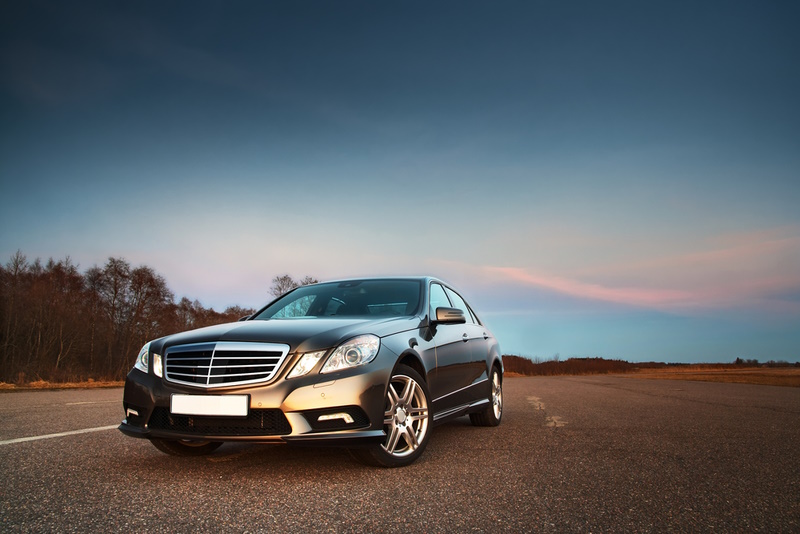
Photo by Depositphotos

Product highlights
- Resolution: 24.5 megapixels
- Sensor Type: Full-frame CMOS sensor
- Image Stabilization: 5-axis in-body image stabilization
- Focus: 273-point Hybrid AF system with Eye-Detection AF
- Video: 4K UHD at 30p, 25p, and 24p, as well as Full HD 1080p at 60p
The Nikon Z6 II is a full-frame mirrorless interchangeable lens camera released in 2020. It features a 24.5-megapixel sensor with a backside-illuminated design for improved low-light performance and a hybrid autofocus system with 273 phase-detection points covering approximately 90% of the image area.
The camera has a fast continuous shooting speed of up to 14 frames per second with the electronic shutter, and it can shoot 4K UHD video at up to 60 frames per second with full-pixel readout.
The Z6 II also has built-in Wi-Fi and Bluetooth connectivity for easy sharing of photos and remote camera control with compatible devices. It has a 3.2-inch tilting LCD screen, an electronic viewfinder with a high resolution of 3.69 million dots, and a rugged, weather-sealed design that makes it suitable for use in challenging conditions.
The camera has been praised for its excellent image quality, fast autofocus, and reliable performance, making it a popular choice for photographers and videographers looking for a high-quality mirrorless camera.
Based on the overall consensus of reviews, The Nikon Z6 II can be given an overall score of 8 to 9 out of 10.
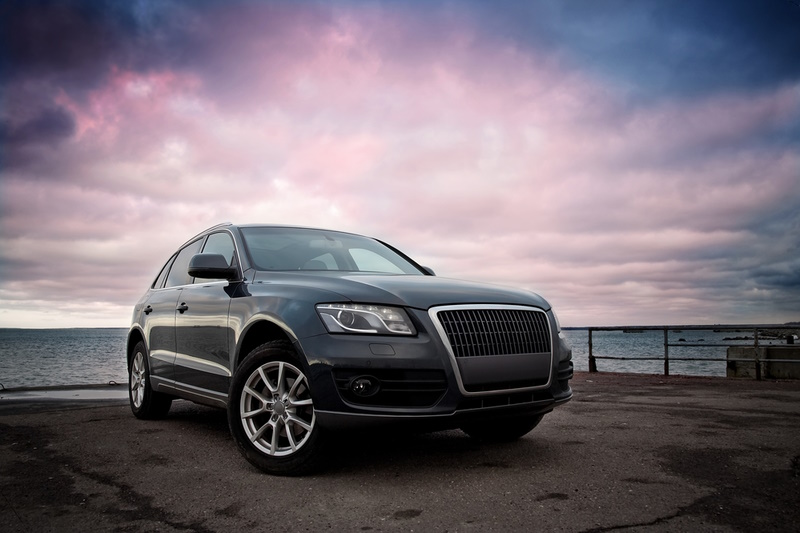
Photo by Depositphotos

Product Highlights
- Resolution: 26.1 megapixels
- Sensor type: X-Trans CMOS 4 APS-C sensor
- Image stabilization: 5-axis in-body image stabilization (IBIS)
- Focus: 425-point hybrid AF system with phase detection autofocus (PDAF) and contrast detection autofocus (CDAF). Face and Eye detection AF, with tracking performance down to -6EV.
- Video: DCI 4K (4096 x 2160) at up to 60fps and Full HD (1920 x 1080) at up to 240fps. F-Log and HLG recording capabilities, with 10-bit 4:2:2 color sampling via HDMI output.
The Fujifilm X-T4 is a mirrorless interchangeable lens camera released in 2020. It features a 26.1-megapixel APS-C sensor with a backside-illuminated design for improved low-light performance and a hybrid autofocus system with 425 phase-detection points covering the entire image area.
The camera has a fast continuous shooting speed of up to 15 frames per second with the electronic shutter and can shoot 4K video at up to 60 frames per second with no crop.
The X-T4 also has built-in Wi-Fi and Bluetooth connectivity for easy sharing of photos and remote camera control with compatible devices.
It has a 3-inch tilting LCD screen, an electronic viewfinder with a high resolution of 3.69 million dots, and a rugged, weather-sealed design that makes it suitable for use in challenging conditions.
The camera also features in-body image stabilization (IBIS) that works in conjunction with Fujifilm’s lens stabilization to provide up to 6.5 stops of stabilization.
The X-T4 has been praised for its excellent image quality, fast autofocus, and customizable controls, making it a popular choice for photographers looking for a versatile and capable mirrorless camera.
Based on the overall consensus of reviews, The Fujifilm X-T4 can be given an overall score of 8 to 9 out of 10.
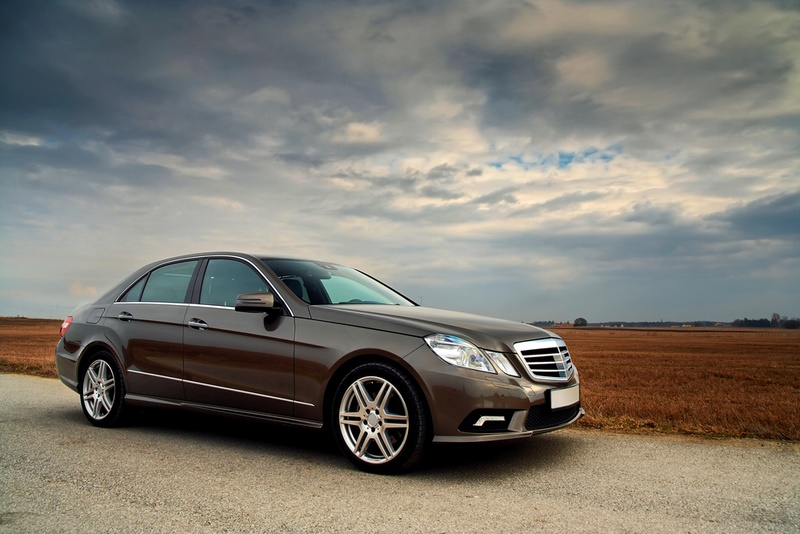
Photo by Depositphotos

Product highlights
- Resolution: 20.3 megapixels
- Sensor Type: Digital Live MOS sensor
- Image Stabilization: 5-axis in-body image stabilization (IBIS)
- Focus: Contrast detection AF with DFD technology (Depth From Defocus)
- Video: 4K video at up to 60 frames per second, 1080p Full HD video at up to 180 frames per second, 10-bit 4:2:2 internal recording, unlimited recording time,
The Panasonic Lumix GH5 is a high-end mirrorless camera designed for professional photographers and videographers. It was released in 2017 and is known for its impressive video capabilities, advanced autofocus system, and rugged build quality.
Some of the key features of the GH5 include a 20.3-megapixel Micro Four Thirds sensor, 5-axis in-body image stabilization, a weather-sealed magnesium alloy body, and a tilting touchscreen LCD. It also offers 4K video recording at up to 60 frames per second and 10-bit 4:2:2 color depth, making it a popular choice for filmmakers and content creators.
The GH5 has a fast autofocus system with 225 autofocus points that cover nearly the entire frame, and it can shoot at up to 12 frames per second in burst mode with autofocus tracking. It also offers a wide range of advanced features for video recording, including unlimited recording time, anamorphic mode, and advanced focus peaking.
Overall, the Panasonic Lumix GH5 is a versatile and powerful camera that is well-suited for both still photography and videography.
Based on the overall consensus of reviews, The Panasonic Lumix GH5 can be given an overall score of 8 to 9 out of 10.

Photo by Pixabay

Product Highlights
- Resolution: 61 megapixels (effective)
- Sensor type: Full-frame back-illuminated CMOS sensor
- Image stabilization: 5-axis optical in-body image stabilization
- Focus: 567 phase-detection AF points and 425 contrast-detection AF points with Real-time Eye AF and Real-time Tracking
- Video: 4K UHD video recording up to 30fps with full pixel readout and no pixel binning, S-Log3, HDR, and HLG support
The Sony A7R IV is a full-frame mirrorless camera designed for professional photographers who demand the highest resolution and image quality. It was released in 2019 and is known for its impressive 61-megapixel sensor, advanced autofocus system, and fast shooting speeds.
The A7R IV features a 61-megapixel full-frame sensor, making it one of the highest-resolution cameras on the market. It also offers 5-axis in-body image stabilization, a weather-sealed magnesium alloy body, and a tilting touchscreen LCD.
It has a fast autofocus system with 567 phase-detection autofocus points that cover nearly the entire frame and can shoot at up to 10 frames per second in burst mode with autofocus tracking.
In addition to its still photography capabilities, the A7R IV is also a strong performer for video, offering 4K video recording at up to 30 frames per second, with full pixel readout and no pixel binning.
It also offers S-Log3 and HLG (Hybrid Log-Gamma) picture profiles for advanced color grading in post-production.
Other notable features of the A7R IV include a 5.76 million-dot electronic viewfinder, dual UHS-II SD card slots, and a USB-C port for charging and data transfer. Overall, the Sony A7R IV is a top-of-the-line camera that is well-suited for professional photographers and videographers who demand the best in image quality and performance.
Based on the overall consensus of reviews, the Canon EOS R6 can be given an overall score of 9 out of 10

Photo by Mike B

Product Highlights
- Resolution: 45.7 megapixels
- Sensor Type: Full-frame CMOS
- Image Stabilization: None (Relies on lens-based stabilization if available)
- Focus: Autofocus System: Multi-CAM 20K autofocus sensor module with TTL phase detection. Focus Points: 153 focus points, including 99 cross-type sensors and 15 sensors that support f/8
- Video: 4K UHD 3,840×2,160 / 30 fps, Full HD 1,920×1,080 / 60 fps
The Nikon D850 is a high-end DSLR camera designed for professional photographers who demand high resolution and fast performance. It was released in 2017 and is known for its 45.7-megapixel full-frame sensor, advanced autofocus system, and rugged build quality.
The D850 features a 45.7-megapixel full-frame sensor, making it one of the highest-resolution DSLRs on the market. It also offers 7-9 fps shooting speeds with the optional battery grip and a fast autofocus system with 153 autofocus points, including 99 cross-type sensors.
The camera also features 4K video recording at up to 30 frames per second and a tilting touchscreen LCD.
The D850 has a robust build quality with a weather-sealed magnesium alloy body, making it ideal for use in challenging environments. It also features a 3.2-inch tilting touchscreen LCD and a 0.75x optical viewfinder with 100% frame coverage.
The camera has dual memory card slots, supporting both XQD and SD cards.
Other notable features of the D850 include built-in Wi-Fi and Bluetooth connectivity, time-lapse recording, and focus stacking for macro photography.
Overall, the Nikon D850 is a top-of-the-line DSLR camera that is well-suited for professional photographers who demand high resolution, fast performance, and advanced features.
Based on the overall consensus of reviews, the Nikon D850 can be given an overall score close to 9 or 10 out of 10
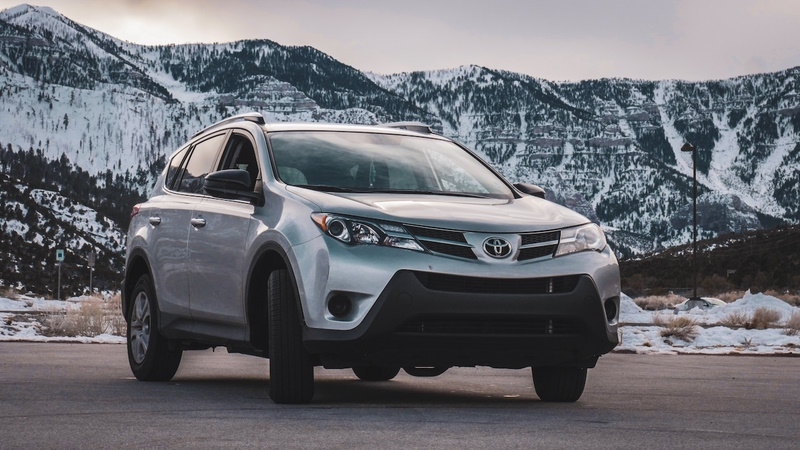
Photo by Prime Cinematics

Product highlights
- Resolution: 20.1 megapixels
- Sensor Type: Full-frame CMOS
- Image Stabilization: In-body Image Stabilizer (IBIS) with up to 8 stops
- Focus: Dual Pixel CMOS AF II with 1053 AF points, up to 100% coverage vertically and 88% horizontally, and Eye Detection AF for humans and animals
- Video: 4K UHD up to 60 fps, Full HD up to 120 fps, 10-bit 4:2:2 recording, and Dual Pixel CMOS AF with tracking and touch focus.
The Canon EOS R6 is a full-frame mirrorless camera designed for enthusiasts and professional photographers who demand high performance and versatility. It was released in 2020 and is known for its impressive 20.1-megapixel sensor, advanced autofocus system, and fast shooting speeds.
The EOS R6 features a 20.1-megapixel full-frame sensor and is capable of shooting at up to 12 frames per second with full autofocus and exposure tracking. It also offers 5-axis in-body image stabilization, a weather-sealed magnesium alloy body, and a vari-angle touchscreen LCD.
It has a fast autofocus system with 1053 autofocus points that cover nearly the entire frame and can shoot at up to 20 frames per second in electronic shutter mode with autofocus tracking.
In addition to its still photography capabilities, the EOS R6 is also a strong performer for video, offering 4K video recording at up to 60 frames per second, with full pixel readout and no crop.
It also offers Canon’s Dual Pixel CMOS AF for advanced autofocus tracking during video recording.
Other notable features of the EOS R6 include built-in Wi-Fi and Bluetooth connectivity, dual memory card slots supporting SD and CFexpress cards, and a battery life of up to 380 shots per charge.
Overall, the Canon EOS R6 is a versatile and powerful camera that is well-suited for both still photography and videography.
Based on the overall consensus of reviews, the Canon EOS R6 can be given an overall score of 8 out of 10.

Photo by S. von Hoerst
III- Tips for Getting the Best Car Shots with Your Camera
Getting the best car shots with your camera requires some planning, preparation, and a bit of creativity. Here are some tips to help you capture stunning car photos:
- Choose the right location: Look for a location that complements the car’s style and color, such as a scenic spot or an industrial backdrop. Make sure the location is safe and legal for photography.
- Clean the car: Ensure the car is clean and free of dirt and debris. A dirty car can detract from the photo’s overall impact.
- Use the right equipment: Consider using a DSLR camera or a high-end mirrorless camera with a wide-angle lens. A tripod can also be helpful in stabilizing the camera and achieving sharp shots.
- Experiment with angles: Try shooting from different angles and heights to find the most flattering perspective. Shooting from a low angle can make the car look more powerful, while a high angle can show off the car’s sleek lines.
- Pay attention to lighting: Use natural light whenever possible, such as during the golden hour or blue hour. Avoid shooting in harsh midday sunlight, which can create unflattering shadows. If shooting in low light conditions, use a tripod and a slower shutter speed to avoid blurry photos.
- Add some creativity: Experiment with different compositions, such as close-up details of the car’s emblem or wheels, or wide shots that include the surrounding scenery. You can also try using props or models to add interest to the scene.
- Edit the photos: After shooting, edit the photos to enhance their impact. Adjust the exposure, contrast, and saturation as needed, and crop the image to improve the composition.
Related posts:
6 Cool Car Photoshoot Ideas – Easy& Creative
How To Photograph Cars – Tips For Taking Great Car Photos
Sony Digital Camera Lenses- The Best Picks
Thanks for reading, I hope you enjoyed the article, in case you have any questions just drop them below & I will be happy to answer you.
The featured photo by Hyundai Motor Group
If you enjoy the site, don’t forget to subscribe, we will only inform you when a new article is posted.

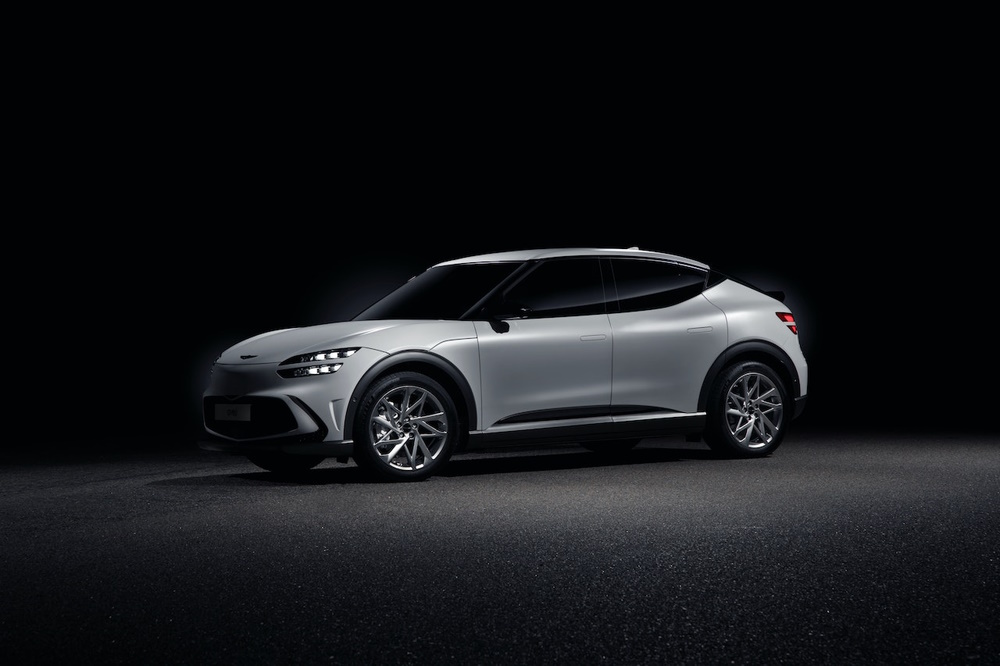




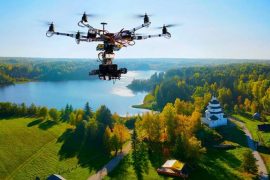
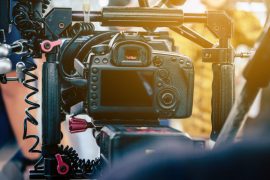
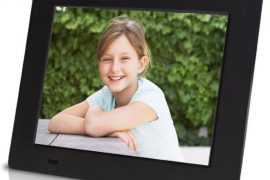
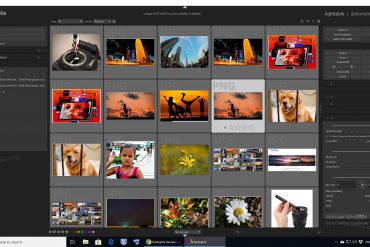
Wow, this was really comprehensive. I have to say if the images are anything to go by these cameras offer you an amazing car shot! Noting lots of these cameras score highly, do you have a personal favourite? If so what is it you like about it? I like that you have listed some for beginners like me as I really am new to photography!
Thank you for your kind words and for taking the time to read the blog post! I’m glad you found it comprehensive and helpful, especially for beginners like yourself. If I had to pick one, I would lean toward the Canon EOS R6, because I am a Canon fan, it has a high-resolution sensor, an excellent autofocus system, and an impressive dynamic range.
It’s essential to choose a camera that best suits your needs, preferences, and budget. All the cameras listed in the blog post are excellent choices for car photography, and I’m confident that you’ll find one that’s perfect for you as you embark on your photography journey. If you have any further questions or need more guidance, please don’t hesitate to ask. Happy shooting!
This article is for specialized photoshoots, what about if someone wants to shoot a car for the purpose of selling it. Meaning, I perceived that this article is for photoshoots for heavy advertising or car magazines or specialized websites, what about practical car photo shots, for the purpose of say selling a personal car.. would the same advices apply or would you have advised differently?
Thank you for your comment. While this article does focus on specialized photoshoots for advertising or magazines, many of the same principles can be applied to practical car photography for selling a personal car. It’s important to consider the lighting, angles, and composition of the shots to showcase the car’s best features and make it look appealing to potential buyers.
However, for practical car photography, you may not need to invest in a high-end camera, Ultimately, the goal is to capture high-quality images that accurately represent the car and make it stand out to potential buyers.